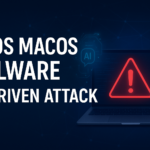Researchers uncover new attack vectors in MIFARE Classic cards by analyzing the CRYPTO-1 algorithm and vulnerabilities, demonstrating how to extract data, clone cards, and compromise both new and old card generations.
The research leads to optimized attack tools and a thorough understanding of vulnerabilities, highlighting the urgent need to replace MIFARE Classic in modern applications.
It explores vulnerabilities in MIFARE Classic memory cards using the CRYPTO-1 protocol, analyzing card-only attacks that exploit weaknesses like predictable nonce generation and parity bit leaks.
The FM11RF08S card is introduced as a response to vulnerabilities in MIFARE Classic, featuring countermeasures such as a static encrypted nonce for nested authentication and a repeatable initial nonce generated by a Linear Feedback Shift Register (LFSR). However, researchers discovered a backdoor in FM11RF08S RFID tags by analyzing the tags’ responses to unexpected commands. They uncovered a hidden authentication method that bypasses the standard security measures of the card.
This backdoor allows attackers full read access to all tag data, including blocks that were previously inaccessible. Additionally, the researchers developed a technique to recover the main encryption key, rendering the tag’s security mechanisms ineffective and compromising the overall security of the FM11RF08S card.
It weakens the security of many RFID systems using this tag model, highlighting the urgent need for robust security in embedded systems.
They discovered and exploited a backdoor in FM11RF08 and FM11RF08S MIFARE Classic clones, significantly speeding up key recovery attacks. By targeting keyA and keyB together and optimizing the search process, they cut attack time by six times.
They also found a universal backdoor key for older FM11RF08 models and FM1208-10 devices, allowing rapid key extraction and posing major security risks. Testing revealed that some non-Fudan cards unexpectedly accept backdoor commands with the same key used by Fudan FM11RF08 cards.
Certain cards, like NXP MF1ICS5005, MF1ICS5006, MF1ICS5007, and USCUID/GDM magic cards, respond to backdoor commands using standard keyA/keyB authentication. The darknested attack is especially effective against SLE66R35, MF1ICS5003, and MF1ICS5004 due to its slower key recovery process compared to the darkside attack. Researchers have found a critical hardware backdoor in the FM11RF08S MIFARE Classic chip, allowing previously unachievable attacks on card data, including cloning.
The backdoor in FM11RF08 chips, present since 2007, undermines their security and affects global systems. The same key is also found on older NXP and Infineon cards. This highlights the need for infrastructure audits and migration to more secure alternatives. Tools and methods are available on Proxmark3 for public analysis and defense.
Follow Us on: Twitter, Instagram, Facebook to get the latest security news!













Leave A Comment